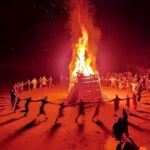🌟 7 Inspiring Facts About National Festivals That Will Change Your Perspective
✨ Introduction: The Heartbeat of a Nation
Festivals are more than just dates on a calendar—they are the soul of a country. National festivals, in particular, hold a very special place because they unite an entire nation under one identity, one emotion, and one spirit. Unlike regional or religious celebrations, national festivals cross barriers of caste, creed, language, and geography. They are about collective pride, shared memories, and the dream of a better tomorrow.
- ✨ Introduction: The Heartbeat of a Nation
- 📜 History of National Festivals
- 📌 Key Facts About National Festivals
- 📆 Timeline of National Festivals in India
- 🌍 Significance of National Festivals
- 🎉 Observance of National Festivals
- 💡 Important Points to Remember
- 🎊 Wishing on National Festivals
- 🙌 Importance in Our Life
- 🏛️ Importance to Society
- ❓ FAQs on National Festivals
- 🌟 Conclusion: Daily Life Impacts of National Festivals
In India, for example, festivals like Republic Day (26th January), Independence Day (15th August), and Gandhi Jayanti (2nd October) remind us of our freedom struggle, our Constitution, and the values of truth and non-violence. Similarly, in other parts of the world, nations celebrate their own founding days, independence struggles, and national heroes.
Let’s take a deep dive into the history, significance, timeline, observance, and impact of national festivals—while also looking at how they continue to shape society and daily life.
📜 History of National Festivals
The idea of national festivals has existed since the concept of nationhood emerged.
In ancient times, communities celebrated victories in wars, coronations of rulers, or significant cultural achievements.
With the rise of modern nations, especially after colonial struggles, Independence Days became central to national pride.
In India, the first Independence Day was celebrated on 15th August 1947, marking freedom from British colonial rule.
The Republic Day celebration began on 26th January 1950, when the Indian Constitution came into force, giving the nation its identity as a sovereign democratic republic.
Gandhi Jayanti (2nd October) was later declared a national holiday to honor Mahatma Gandhi, the father of the nation and a global icon of peace.
Globally, the United States celebrates 4th of July, France celebrates Bastille Day (14th July), and many countries in Africa, Asia, and Latin America have similar festivals marking their freedom.
📌 Key Facts About National Festivals
Here are some eye-opening facts about national festivals:
Symbol of Unity: They bring together millions of people, irrespective of religion or language.
Nation-Building: National festivals act as a reminder of sacrifices and inspire new generations.
Global Recognition: Countries display their culture and traditions to the world through parades, cultural shows, and flag hoisting ceremonies.
Legal Holidays: In most countries, national festivals are official public holidays, allowing citizens to participate.
Cultural Display: Folk dances, patriotic songs, flag hoisting, and parades are common forms of celebration.
Economic Impact: Markets boom with the sale of flags, traditional clothes, sweets, and souvenirs during such days.
Emotional Bond: For many, these days are not just holidays but reminders of the sacrifices that shaped their nation.
📆 Timeline of National Festivals in India
15th August 1947: First Independence Day celebrated at the Red Fort, New Delhi.
26th January 1950: India became a Republic; Constitution came into force.
1955 onwards: Republic Day parade tradition started in New Delhi.
2nd October 1950s: Gandhi Jayanti declared a national holiday to honor Mahatma Gandhi.
Today: These three festivals remain the most recognized national holidays in India, celebrated across schools, government institutions, and public spaces.
🌍 Significance of National Festivals
National Pride: Reminds citizens of their shared history and identity.
Inspiration for Youth: Teaches the younger generation about the struggles of freedom fighters.
Unity in Diversity: Brings people of different religions, regions, and backgrounds together.
Global Image: Strengthens the country’s image on an international platform.
Moral Lessons: Emphasizes values like freedom, equality, truth, non-violence, and democracy.
🎉 Observance of National Festivals
National festivals are observed with great enthusiasm:
Independence Day (India): The Prime Minister hoists the national flag at the Red Fort, followed by cultural programs, flag hoisting in schools, colonies, and organizations.
Republic Day: The grand parade at Rajpath (now Kartavya Path) showcases India’s defense strength, cultural heritage, and diversity.
Gandhi Jayanti: Tributes, prayer meetings, cleanliness drives, and peace marches are organized.
Global Examples: In the U.S., the 4th of July is celebrated with fireworks, barbecues, and parades. In France, Bastille Day has military parades and fireworks at the Eiffel Tower.
💡 Important Points to Remember
National festivals are different from religious festivals—they represent nationhood, not faith.
They foster patriotism and cultural pride.
They are often public holidays, ensuring mass participation.
They serve as teaching moments for children and youth.
They act as a bridge between past, present, and future.
🎊 Wishing on National Festivals
Wishes play a huge role in spreading patriotism and unity:
“Happy Independence Day! Let’s honor the sacrifices of our heroes.”
“Wishing you a proud Republic Day filled with unity and progress.”
“On Gandhi Jayanti, let us walk the path of truth and non-violence.”
Sharing messages, quotes, and greetings on social media helps amplify the spirit of these occasions globally.
🙌 Importance in Our Life
National festivals are not just ceremonial—they directly influence our lives:
They instill discipline and respect when students participate in parades and flag hoisting.
They remind citizens of their rights and duties under the Constitution.
They encourage unity, reducing social divides.
They strengthen democracy, reminding people that power lies in their hands.
🏛️ Importance to Society
They keep history alive for future generations.
They reduce social and cultural gaps by celebrating common values.
They create collective memories through parades, songs, and traditions.
They boost tourism, as national festivals often attract global visitors.
❓ FAQs on National Festivals
Q1. Why are national festivals celebrated?
👉 To honor freedom, unity, and the sacrifices of national heroes.
Q2. Which are the three main national festivals of India?
👉 Republic Day, Independence Day, and Gandhi Jayanti.
Q3. Are national festivals celebrated globally?
👉 Yes, every country has its own national days, like the U.S. (4th July), France (Bastille Day), etc.
Q4. Do national festivals have an economic impact?
👉 Yes, they boost markets, tourism, and cultural industries.
Q5. What is the difference between national and religious festivals?
👉 National festivals represent the nation as a whole, while religious festivals are faith-based.
🌟 Conclusion: Daily Life Impacts of National Festivals
National festivals are the living heartbeat of a country. They remind us that our freedom was not free—it was earned with sacrifices, struggles, and unity. They inspire youth to dream big, citizens to act responsibly, and nations to progress collectively.
In daily life, they nurture patriotism, strengthen cultural bonds, and remind us of our responsibilities as citizens. More than anything, they bring hope—hope for a future built on freedom, equality, and unity.
So, the next time you see the national flag unfurl or hear the strains of the national anthem, remember—you are not just a citizen, you are a part of a living history that continues to inspire the world.
India ‘celebrates’ four of them: Republic Day, Independence Day, Gandhi Jayanti, and Children’s Day. The others, like Teacher’s Day and Mother’s Day, are more on the scale of observances.
What separates national festivals from the others is the number of levels they happen at.
For one, the government does not merely declare holidays but becomes one of the participants. On Republic Day and Independence Day, there are formal events – including a march-past and flag-hoisting – in all the state capitals, district headquarters, corporations and municipalities, panchayats… and so it goes. Step outside the government, and you have offices, educational institutions, co-operatives and other organisations doing their bit on corresponding scales.
If you want to witness official celebrations, the place to be in is New Delhi. The spectacular pageants, grand march-pasts, floats, cultural tableaux and shows have tens of thousands of people lining the roads to view them.
The essence of the mood, however, comes from the participation of the community as an entity, however platitudinous that might sound.
In fact, Republic Day and Independence Day have slowly gained almost the same air that other festivals have. You have people sending greeting cards, wishing each other, organising entertainment, eating out, and generally letting their hair down.
Gandhi Jayanti and Children’s Day are more muted. Gandhi Jayanti is officially significant but does not evoke the same response from the people as Independence Day and Republic Day.
Children’s Day is more or less confined to schools. So is Teacher’s Day, when many schools follow the practice of observing a role reversal: getting the students of the higher grades to take classes for the lower grades while the teachers themselves sit among the students.
The birthdays of other national leaders are not much more than official observances. The states of India celebrate their own days. The bigger cities, especially the state capitals, hold programmes and events that specifically display the highlights of the state’s culture and way of life.
| National Festivals of India | ||
| JAN | 26 | Republic Day |
| AUG | 15 | Independence Day |
| OCT | 02 | Gandhi Jayanthi |








